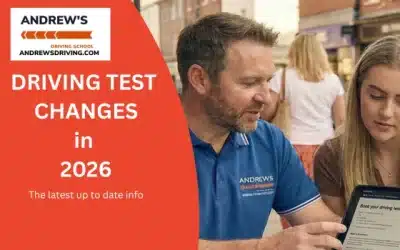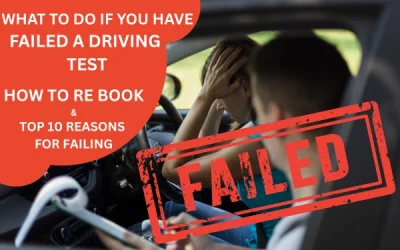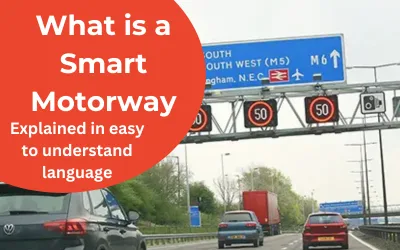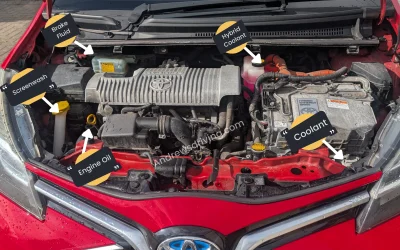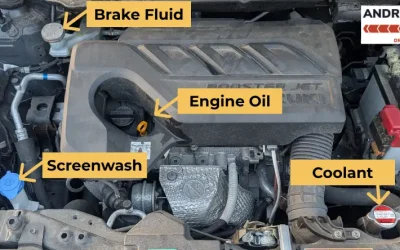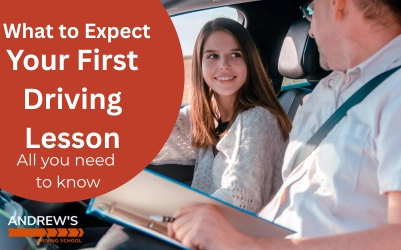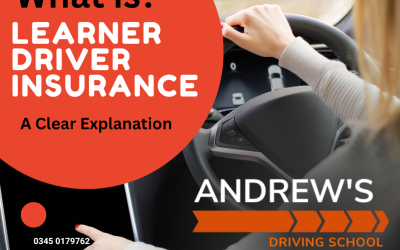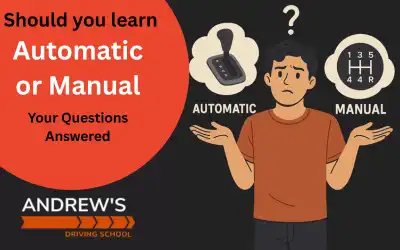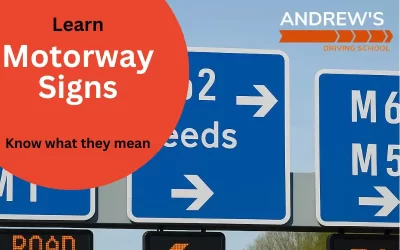Driving Test Faults , Major or Minor driving faults explained
Understand the difference and why certain faults make a fail
.
To successfully prepare for your practical driving test, it’s essential to not only understand the skills you need to demonstrate but also to be aware of the behaviors and actions you should steer clear of, commonly referred to as driving test faults. This guide will familiarize you with various types of faults, especially those that could lead to an automatic fail. By knowing what to avoid, you’ll be better equipped to refine your skills and prevent any potential pitfalls. Let’s delve into the details.
A fault is defined as any instance where your driving performance does not align with the standards expected by your examiner. This can range from simple oversights, such as neglecting to check your blind spot before moving off, to more serious actions like causing a collision. Faults are categorized into three Categories:
- Dangerous faults — a fault that causes actual danger to yourself, the public, another vehicle or anything else
- Serious driving faults — a fault that had the potential to endanger
- Driver faults — a minor fault that was not potentially dangerous in isolation, but could be dangerous if it reoccurs often
The first two categories, dangerous and serious faults, are commonly referred to as majors, and committing just one will result in an instant failure of your driving test, making it essential to steer clear of these. The third category, driving faults, also known as minors, will not cause you to fail on their own, but accumulating more than 15 may lead to a failing grade, and if the same minor fault is repeated,this could be deemed as a habitual fault and could be marked as a serious fault, resulting in a fail.
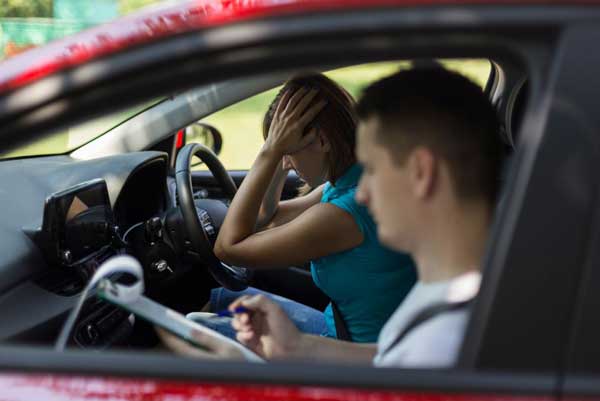
What Could I get a Fault For ?
As we have said the faults are separated into 3 categories, as far as passing and any driver fault may be allocated to any of these categories based on the examiners opinion of the fault.
On the driving test marking sheet there are over 40 different fault categories ranging from checking mirrors to approach speed at junctions.
In our professional opinion and based on hundreds of driving tests presented the top reasons for failing a driving test are as follows
- Observation at Junctions- i.e. being uncertain of when to go, usually this is connected to speed on approach to the junction
- Use of mirrors when changing direction-i.e. Missing a mirror check this is particularly common when changing lanes, and is very often a serious fault
- Turning right into a side road-example. not judging oncoming traffic correctly, not being in the correct road position while waiting to turn or cutting the corner
- Move off safely-example this is nearly always due to insufficient blind spot checking
- Progress-i.e failing to make progress by driving well under the speed limit and hindering the natural flow of traffic
Based on over 100 tests the above are the top reasons that learners have failed during the last 12 months.
Driving Test Faults FAQs
How many minors can I get on my driving test?
You can pass your test with 15 minor faults! that is if your examiner does not consider any of the faults to be habitual. If you get more than 15 then your driving test will be unsuccessful.
The driving test lasts for around 40 minutes so if you manage to get 15 faults that would be more than one every 3 minutes, so even though you may pass with 15 minors, you should be aiming for a much better result
How many minors can I have for the same fault?
There is no set rule for this, and it is purely down to the examiners opinion, the main thing is to go over your driving with your instructor to iron out any habitual faults you may have
What’s an example of a serious vs a minor fault?
- Emerging out of a junction without adequate observation with no other vehicles around would probably be a serious fault.
- emerging from the same junction at the same speed and causing another vehicle to take evasive action would more than likely be a dangerous fault.
- At the same junction again but this time you stop a little short of the line, but make adequate observation and emerge safely most likely outcome would be a minor
What will i fail my driving test instantly for?
Any serious or dangerous faults on your driving test will be an instant fail, this would mean that you are not yet ready to use the roads unsupervised and that your driving has the potential to cause a danger to others
Will stalling on my driving test cause me to fail?
Stalling on your driving test will be marked the same as any other fault, so long as you do not cause danger or too much inconvenience to other road users this is usually a minor. It is quite common for learners to stall on a driving test usually due to a bit of nervousness,this does not usually cause a problem, however, one test i recall the pupil stalled at some traffic lights and by the time she re started the engine the lights had turned red, this caused the driver behind to beep which caused the stall to become serious.
Can I fail my driving test on the Show me Tell me questions?
Yes and no! you will be given one minor for getting one or both of the questions incorrect. However with the new type of show me questions you are asked the second question whilst the car is moving, and you may fail if there is any loss of control of the car.
top tip If you are struggling to locate any of the ancillary controls whilst driving , simply say to the examiner that you will need to pull over to have a look for it, you will be asked the same question again when you are moving, but you will now know where the relevant item is.
Can I fail on a manoeuvre on my test?
This has been left till last as your driving test manoeuvres’ are probably not perfect. The good news is that they don’t need to be perfect, just safe and without causing inconvenience to other road users.
You will fail only if you do not make adequate observations, take too long, or if you finish the manoeuvre leaving your car in an unsafe or inconvenient position
Our tips to help you to pass first time
Take regular driving lessons with your instructor
Listen to what your instructor tells you ( All instructors want their pupils to pass)
Don’t forget any observations , blind spots, mirrors etc etc
Stay calm and just do your best!
How long will I need to wait if I fail my driving test?
If the worst happens and you do fail, don’t worry too much.
You can re book your test straight away, although the booking system will not allow you to take a test within 10 working days.
If you’ve failed a driving test, don’t be discouraged
the tips below from experienced driving instructors will help you understand what went wrong, avoid common mistakes, and improve your chances of passing next time.
Know the different types of faults
Dangerous or serious faults (majors) = instant fail.
Minor faults (driving faults) are allowed—up to 15 total, but repeating the same minor fault can be upgraded to a major as it may be seen as habitual.
Focus on high-risk areas:
The top reasons people fail include
Poor observation at junctions
Missing mirror checks when changing direction
Incorrect turns (e.g., right turns into side roads)
Unsafe move-offs (not checking blind spots)
Failing to keep traffic flowing (e.g., driving too slowly)
Practice observation and positioning:
Junctions: Approach at a safe speed, check left-right-left, and proceed confidently.
Mirrors & blind spots: Always check before signaling or moving; especially when turning or merging.
Turns: Position correctly before turning and judge oncoming traffic safely.
Manoeuvres matter, but don’t overthink them
Manoeuvres just need to be safe and controlled, not perfect.
You’ll fail a manoeuvre only if you’re unsafe, cause inconvenience to others, or miss necessary observations.
Manage minor faults smartly
It’s okay to make a few mistakes, but avoid repeating the same one too often—examiners may upgrade repeated minors to majors.
Aim to come away with fewer than 10 minor faults to feel confident.
Stay calm and attentive
Nervousness can lead to minor errors like stalling—keep your cool and follow your instructor’s advice.
Treat the “show me/tell me” questions carefully: only one minor fault is given unless you lose control of the car.
Learn from feedback and rebook only when you feel ready
If you fail, the examiner will explain your faults—listen carefully and work on those areas with your instructor.
You must wait 10 working days before rebooking, so use that time wisely.
By concentrating on strong observation, clear mirror use, safe positioning, and avoiding repeat mistakes, you’ll gain confidence and significantly boost your chances of passing with fewer faults. Good luck—with focused practice, you’ve got this! ?
You can rebook your test on the DVSA test booking page
If you are about to take your driving test there is some good info on the DVSA ready to pass website, which will help you decide if you are ready to take your test
How Will the 2026 Booking Changes Affect Your Driving Test?
Big Changes Coming to The Driving Test Booking System – What Learners Need to Know for 2026A fairer, safer way to book your test is on the horizon. Here’s how the new DVSA rules will put control...
When Can I Rebook My Driving Test After Failing?
When Can I Rebook My Driving Test After Failing? And the top 10 reasons for failing a driving testThe 10-Working Day Rule and Rebooking Times If you’ve just found out that you didn’t pass your...
What is a Smart Motorway
Learn what a smart motorway is, how it works, and the key rules every new driver should know — from red X signs to variable speed limits and safe breakdown tips.
Toyota-Yaris-1.5-hybrid-engine-diagram
This Toyota Yaris Hybrid engine diagram helps learner drivers prepare for “Show Me, Tell Me” questions in the driving test. It highlights the brake fluid, engine coolant, hybrid inverter coolant, oil dipstick, and screen wash locations, plus a key safety note on orange high-voltage wiring.
Suzuki Swift Booster Jet Hybrid Engine Diagram
This Suzuki Swift Hybrid engine diagram helps learner drivers quickly identify key under-bonnet components for their ‘Show Me, Tell Me’ test.
First Driving Lesson
First Driving Lesson What to Expect and How to PrepareWhat to Expect on Your First Driving Lesson – Expert Tips from Andrew’s Driving School Your first driving lesson marks the beginning of your...
What is learner insurance?
What is Learner Insurance ? How to insure your car as a learner and some money saving ideasGetting Ready to Hit the Road? Make Sure You’re Covered with Learner Driver Insurance Before you start...
Are Electric Cars Automatic or Manual?
Are electric cars Automatic or Manual?Electric cars differ from traditional cars but are electric cars automatic or manual? Driving an electric car is a different experience to driving either a...
Should I Learn Automatic or Manual
Choosing to learn to drive automatic or manual, read about the advantages and disadvantages of both to help make an informed choice
Motorway Signs Driving Theory
Motorway signs explained in plain english, know the meanings of those signs with a blue
Areas we cover
Abergele | Anglesey | Amlwch | Bangor | Barnsley | Caernarfon | Colwyn Bay | Conwy | Denbigh | Flint | Mold | Holyhead | Holywell | Llandudno | Llanrwst | Prestatyn | Rhyl | Shrewsbury | Wrexham | Telford
Automatic Driving Lessons | Driving Instructor Training | Driving Advice

